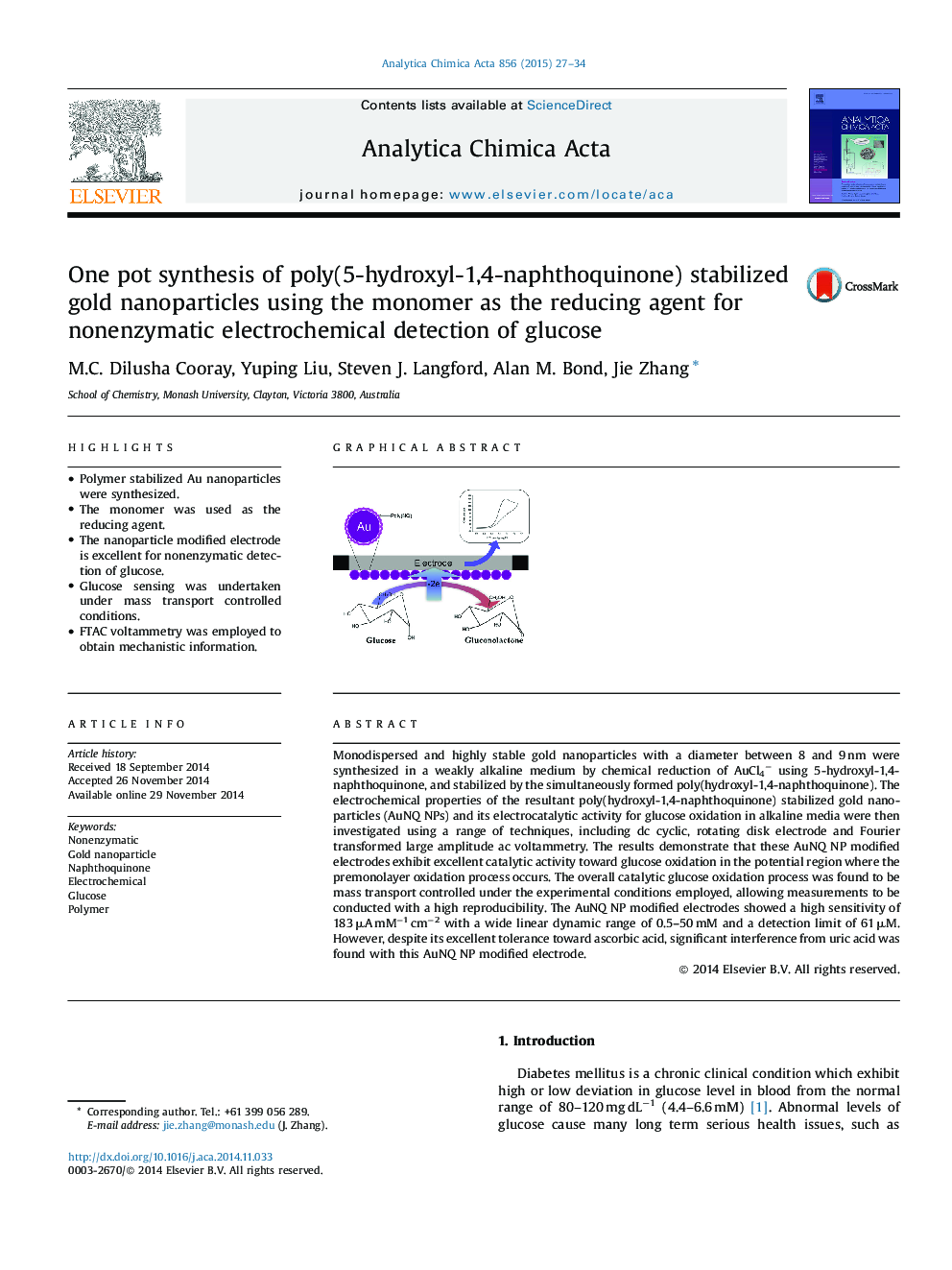| Article ID | Journal | Published Year | Pages | File Type |
|---|---|---|---|---|
| 1163754 | Analytica Chimica Acta | 2015 | 8 Pages |
•Polymer stabilized Au nanoparticles were synthesized.•The monomer was used as the reducing agent.•The nanoparticle modified electrode is excellent for nonenzymatic detection of glucose.•Glucose sensing was undertaken under mass transport controlled conditions.•FTAC voltammetry was employed to obtain mechanistic information.
Monodispersed and highly stable gold nanoparticles with a diameter between 8 and 9 nm were synthesized in a weakly alkaline medium by chemical reduction of AuCl4− using 5-hydroxyl-1,4-naphthoquinone, and stabilized by the simultaneously formed poly(hydroxyl-1,4-naphthoquinone). The electrochemical properties of the resultant poly(hydroxyl-1,4-naphthoquinone) stabilized gold nanoparticles (AuNQ NPs) and its electrocatalytic activity for glucose oxidation in alkaline media were then investigated using a range of techniques, including dc cyclic, rotating disk electrode and Fourier transformed large amplitude ac voltammetry. The results demonstrate that these AuNQ NP modified electrodes exhibit excellent catalytic activity toward glucose oxidation in the potential region where the premonolayer oxidation process occurs. The overall catalytic glucose oxidation process was found to be mass transport controlled under the experimental conditions employed, allowing measurements to be conducted with a high reproducibility. The AuNQ NP modified electrodes showed a high sensitivity of 183 μA mM−1 cm−2 with a wide linear dynamic range of 0.5–50 mM and a detection limit of 61 μM. However, despite its excellent tolerance toward ascorbic acid, significant interference from uric acid was found with this AuNQ NP modified electrode.
Graphical abstractFigure optionsDownload full-size imageDownload as PowerPoint slide
